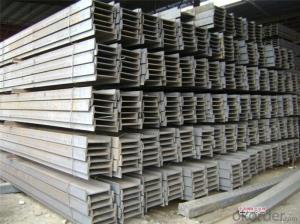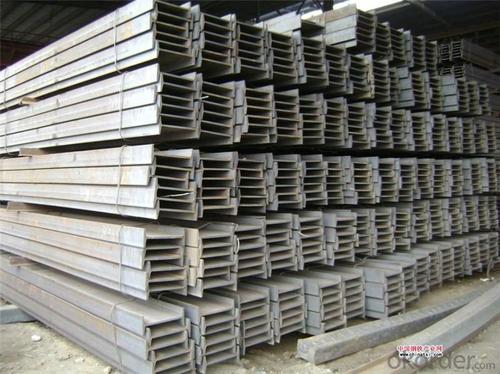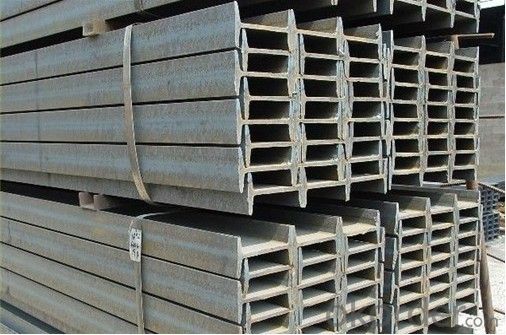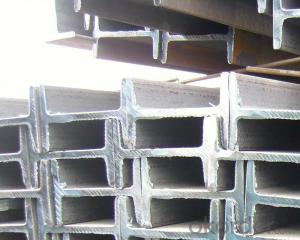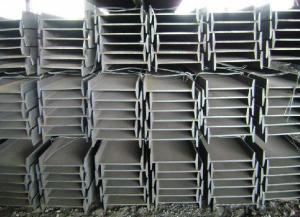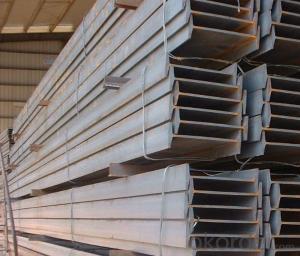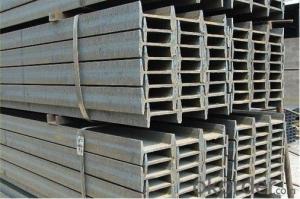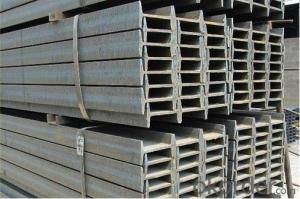Hot Rolled IPE and IPEAA Beams in Q235B Grade with Good Price
- Loading Port:
- Tianjin
- Payment Terms:
- TT or LC
- Min Order Qty:
- 25 m.t.
- Supply Capability:
- 10000 m.t./month
OKorder Service Pledge
OKorder Financial Service
You Might Also Like
Product Applications:
Hot Rolled Steel I-Beams are ideal for structural applications and are widely used in the construction of buildings and bridges, and the manufacturing, petrochemical, and transportation industries.
Product Advantages:
OKorder's Steel I-Beams are durable, strong, and resist corrosion.
Main Product Features:
· Premium quality
· Prompt delivery & seaworthy packing (30 days after receiving deposit)
· Corrosion resistance
· Can be recycled and reused
· Mill test certification
· Professional Service
· Competitive pricing
Product Specifications:
Manufacture: Hot rolled
Grade: Q195 – 235
Certificates: ISO, SGS, BV, CIQ
Length: 6m – 12m, as per customer request
Packaging: Export packing, nude packing, bundled
Chinese Standard (H*W*T) | Weight (Kg/m) | 6m (pcs/ton) | Light I (H*W*T) | Weight (Kg/m) | 6m (pcs/ton) | Light II (H*W*T) | Weight (Kg/m) | 6M |
100*68*4.5 | 11.261 | 14.8 | 100*66*4.3 | 10.13 | 16.4 | 100*64*4 | 8.45 | 19.7 |
120*74*5.0 | 13.987 | 11.9 | 120*72*4.8 | 12.59 | 13.2 | 120*70*4.5 | 10.49 | 15.8 |
140*80*5.5 | 16.89 | 9.8 | 140*78*5.3 | 15.2 | 10.9 | 140*76*5 | 12.67 | 13.1 |
160*88*6 | 20.513 | 8.1 | 160*86*5.8 | 18.46 | 9 | 160*84*5.5 | 15.38 | 10.8 |
180*94*6.5 | 24.143 | 6.9 | 180*92*6.3 | 21.73 | 7.6 | 180*90*6 | 18.11 | 9.2 |
200*100*7 | 27.929 | 5.9 | 200*98*6.8 | 25.14 | 6.6 | 200*96*6.5 | 20.95 | 7.9 |
220*110*7.5 | 33.07 | 5 | 220*108*7.3 | 29.76 | 5.6 | 220*106*7 | 24.8 | 6.7 |
250*116*8 | 38.105 | 4.3 | 250*114*7.8 | 34.29 | 4.8 | 250*112*7.5 | 28.58 | 5.8 |
280*122*8.5 | 43.492 | 3.8 | 280*120*8.2 | 39.14 | 4.2 | 280*120*8 | 36.97 | 4.5 |
300*126*9 | 48.084 | 3.4 | 300*124*9.2 | 43.28 | 3.8 | 300*124*8.5 | 40.87 | 4 |
320*130*9.5 | 52.717 | 3.1 | 320*127*9.2 | 48.5 | 3.4 | |||
360*136*10 | 60.037 | 2.7 | 360*132*9.5 | 55.23 | 3 |
FAQ:
Q1: Why buy Materials & Equipment from OKorder.com?
A1: All products offered byOKorder.com are carefully selected from China's most reliable manufacturing enterprises. Through its ISO certifications, OKorder.com adheres to the highest standards and a commitment to supply chain safety and customer satisfaction.
Q2: What makes stainless steel stainless?
A2: Stainless steel must contain at least 10.5 % chromium. It is this element that reacts with the oxygen in the air to form a complex chrome-oxide surface layer that is invisible but strong enough to prevent further oxygen from "staining" (rusting) the surface. Higher levels of chromium and the addition of other alloying elements such as nickel and molybdenum enhance this surface layer and improve the corrosion resistance of the stainless material.
Q3: Can stainless steel rust?
A3: Stainless does not "rust" as you think of regular steel rusting with a red oxide on the surface that flakes off. If you see red rust it is probably due to some iron particles that have contaminated the surface of the stainless steel and it is these iron particles that are rusting. Look at the source of the rusting and see if you can remove it from the surface.
Images:
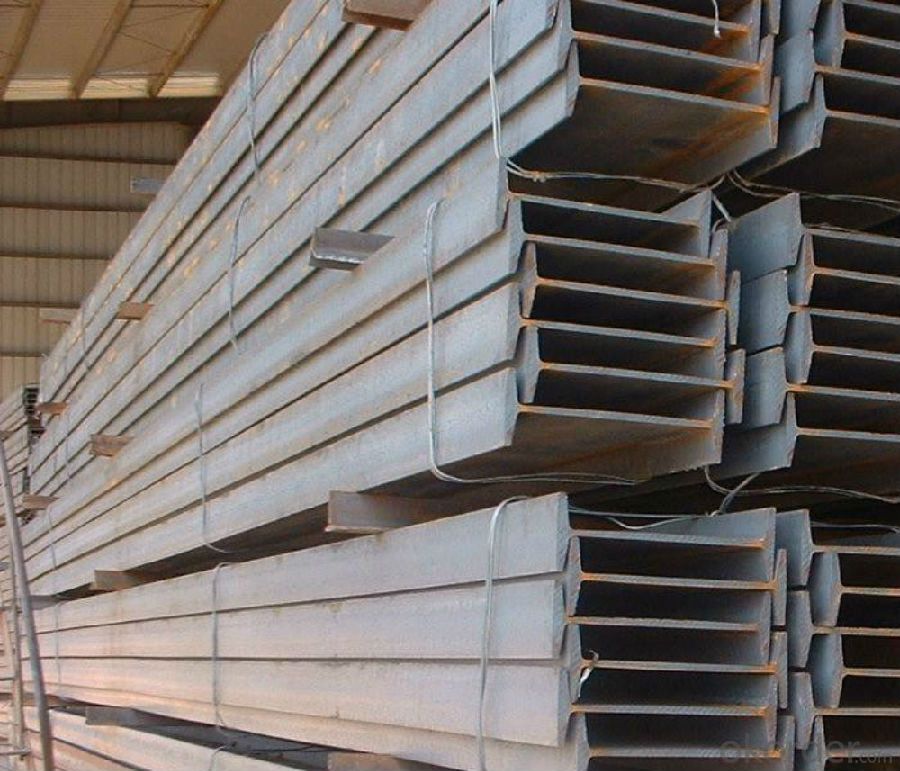
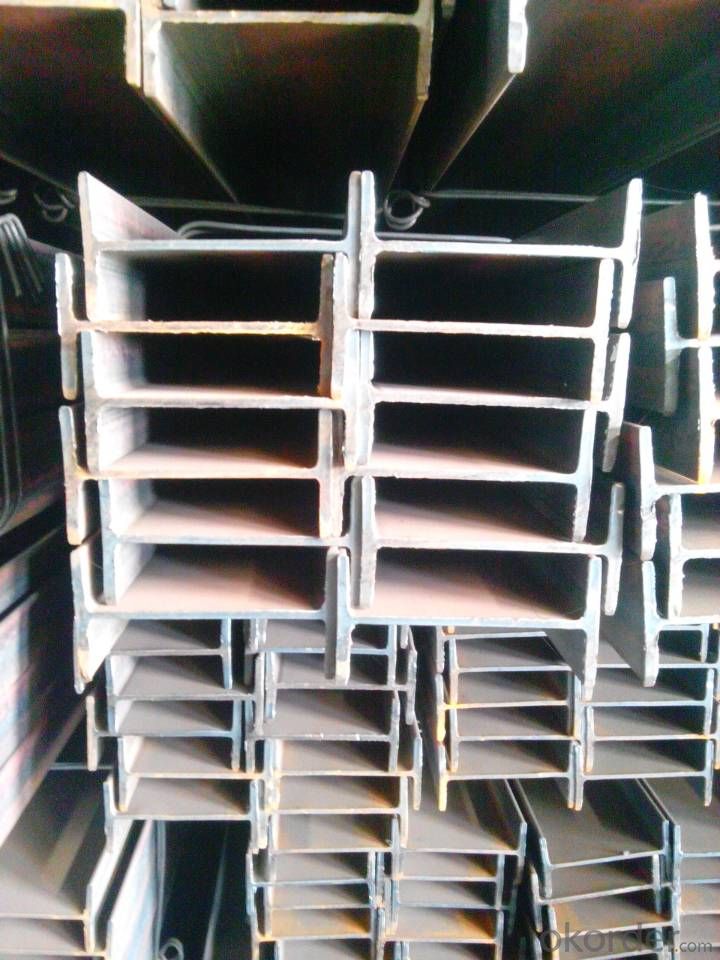
- Q: Are steel I-beams suitable for high-rise building construction?
- Yes, steel I-beams are highly suitable for high-rise building construction. They have been widely used in the construction industry for many decades due to their numerous advantages. Firstly, steel I-beams possess exceptional strength-to-weight ratio, making them ideal for tall structures. They can withstand heavy loads and provide excellent structural support, which is crucial in high-rise buildings. This strength allows for the construction of taller and more spacious buildings without compromising structural integrity. Secondly, steel I-beams are highly durable and resistant to various environmental factors. They can endure extreme weather conditions, seismic activities, and even fire. This durability ensures the longevity and safety of high-rise buildings, providing occupants with a secure living or working environment. Additionally, steel I-beams are versatile and allow for flexible design options. They can be customized to fit specific architectural requirements and building codes. This flexibility enables architects and engineers to create innovative and aesthetically pleasing high-rise structures. Moreover, the use of steel I-beams in high-rise construction allows for faster and more efficient construction processes. Steel is a readily available material, and the prefabricated nature of I-beams makes them easy to transport and assemble on-site. This reduces construction time and costs, making it an attractive option for building owners. Lastly, steel I-beams are sustainable and eco-friendly. Steel is a highly recyclable material, and using it in construction helps reduce the demand for new raw materials. Additionally, steel structures can be dismantled and recycled at the end of their lifespan, minimizing waste and environmental impact. In conclusion, steel I-beams are highly suitable for high-rise building construction due to their exceptional strength, durability, versatility, efficiency, and sustainability. They have proven to be a reliable and cost-effective choice for creating tall and safe structures, making them a preferred option in the construction industry.
- Q: How do steel I-beams contribute to the overall fire safety of a building?
- Steel I-beams contribute to the overall fire safety of a building in several ways. Firstly, they have a high melting point, which means they are less likely to collapse or lose their structural integrity during a fire. This provides additional time for occupants to evacuate the building safely. Additionally, steel I-beams have a low thermal conductivity, meaning they do not transfer heat as readily as other materials. This reduces the spread of fire and heat throughout the building, limiting the potential damage. Finally, steel I-beams are non-combustible, meaning they do not contribute to the fuel source of a fire, further minimizing the fire risk.
- Q: What are the common connections details for steel I-beams?
- The common connection details for steel I-beams include welding, bolting, and using various types of connectors such as clevises, gusset plates, and end plates. These connection methods ensure that the I-beams are securely joined together to form a strong and rigid structural system.
- Q: What are the common challenges faced when using steel I-beams in construction?
- Some common challenges faced when using steel I-beams in construction include their weight, transportation and handling difficulties, potential for corrosion, and the need for skilled labor during installation.
- Q: What are the different factors that affect the strength of steel I-beams?
- There are several factors that affect the strength of steel I-beams. 1. Material composition: The type of steel used and its chemical composition greatly influence the strength of the I-beam. Higher carbon content generally results in increased strength, while other alloying elements such as manganese, silicon, and nickel can also impact the strength properties. 2. Cross-sectional shape: The shape of the I-beam's cross-section plays a significant role in its strength. The flange width, flange thickness, and web thickness all contribute to the overall strength of the beam. Generally, wider flanges and thicker web sections result in greater strength. 3. Moment of inertia: The moment of inertia, which is a measure of an object's resistance to changes in rotation, affects the beam's strength. A higher moment of inertia indicates a greater resistance to bending, thus increasing the beam's strength. 4. Length and unsupported span: The length of the I-beam and the unsupported span it needs to cover can impact its strength. Longer beams and larger unsupported spans may require additional support or reinforcement to maintain their strength. 5. Load distribution: The way the load is distributed along the length of the beam affects its strength. Concentrated loads and point loads exert more stress on specific areas, potentially leading to localized failure. Uniformly distributed loads are generally more favorable for maintaining the beam's strength. 6. Temperature: Steel's strength can be affected by changes in temperature. At high temperatures, steel can experience thermal expansion and softening, leading to reduced strength. Conversely, extremely low temperatures can cause brittleness, making the steel more susceptible to fracture. 7. Manufacturing and fabrication processes: The quality of the manufacturing and fabrication processes employed can influence the strength of the I-beam. Proper welding, heat treatment, and post-processing can enhance the structural integrity and strength of the beam. 8. Corrosion and environmental factors: The presence of corrosive agents, such as moisture or chemicals, can weaken the steel over time. Proper protective coatings and regular maintenance are essential to prevent corrosion and preserve the beam's strength. It is important to consider these factors when designing and selecting steel I-beams for various applications to ensure optimal strength and structural integrity.
- Q: What are the considerations for constructability and ease of installation with steel I-beams?
- Some considerations for constructability and ease of installation with steel I-beams include the weight and size of the beams, the availability of equipment and machinery to lift and position them, the need for proper alignment and connections, and the potential for on-site modifications or adjustments. Additionally, factors such as site access, temporary support requirements, and coordination with other trades or construction activities also need to be taken into account.
- Q: What are the considerations for fireproofing steel I-beams?
- When considering fireproofing steel I-beams, several factors need to be taken into account. 1. Fire rating requirements: The first consideration is to determine the required fire rating for the I-beams. Fire ratings indicate the duration for which the material can withstand fire without losing its structural integrity. The specific fire rating will depend on the building code requirements and the intended use of the structure. 2. Fireproofing materials: There are various fireproofing materials available for steel I-beams, including intumescent coatings, concrete encasement, and fire-resistant sprays. Each material has different properties in terms of fire resistance, thickness, and application method. It is important to choose a material that meets the required fire rating and is suitable for the specific project conditions. 3. Application method and accessibility: When considering fireproofing, the method of application and accessibility to the I-beams need to be considered. Some fireproofing materials can be sprayed directly onto the steel beams, while others may require encasement or trowel application. Accessibility to the beams may affect the choice of materials or the cost and complexity of the fireproofing process. 4. Structural considerations: Fireproofing materials add weight to the steel I-beams, which can impact the overall structural design. The additional weight may require adjustments in the design or calculations to ensure the structural integrity of the building. Coordination between the structural engineer and the fireproofing contractor is essential to ensure that the fireproofing does not compromise the structural performance of the I-beams. 5. Durability and maintenance: Fireproofing materials should have good durability to withstand the elements, vibrations, and potential impacts. Regular maintenance and inspections are necessary to ensure the fireproofing remains intact and effective over time. The chosen fireproofing system should have a long service life and be easy to maintain, minimizing the need for frequent repairs or replacements. 6. Cost and budget: Fireproofing can add significant costs to a project, so budget considerations are essential. The choice of fireproofing materials, application method, and required fire rating can all impact the overall cost. It is important to balance the cost with the required level of fire protection to ensure compliance with safety regulations while staying within the project budget. By taking these considerations into account, architects, engineers, and contractors can make informed decisions regarding the fireproofing of steel I-beams to ensure the safety and integrity of the structure in the event of a fire.
- Q: Are steel I-beams suitable for industrial buildings?
- Yes, steel I-beams are suitable for industrial buildings due to their high strength, durability, and ability to withstand heavy loads. These beams provide structural support, ensuring the stability and safety of the building, making them a popular choice in industrial construction.
- Q: What's the difference between I-beam and H section steel?
- H type steel with flange width, and narrow distinction, respectively represented by HW, HM, HN and web and flange size, species diversity, such as HM500x300x11x15, on behalf of waist high 500mm, 11mm thickness, flange width 300mm, thickness 18mm, this is in fact the theory of value with the actual deviation.
- Q: How do steel I-beams perform in terms of fatigue resistance?
- Steel I-beams are known for their excellent fatigue resistance. Due to their shape and design, I-beams can withstand repeated loading and unloading without experiencing significant fatigue failure. The structural integrity and high strength of steel make I-beams highly resistant to fatigue, making them a preferred choice in many construction and engineering applications.
Send your message to us
Hot Rolled IPE and IPEAA Beams in Q235B Grade with Good Price
- Loading Port:
- Tianjin
- Payment Terms:
- TT or LC
- Min Order Qty:
- 25 m.t.
- Supply Capability:
- 10000 m.t./month
OKorder Service Pledge
OKorder Financial Service
Similar products
Hot products
Hot Searches
Related keywords
